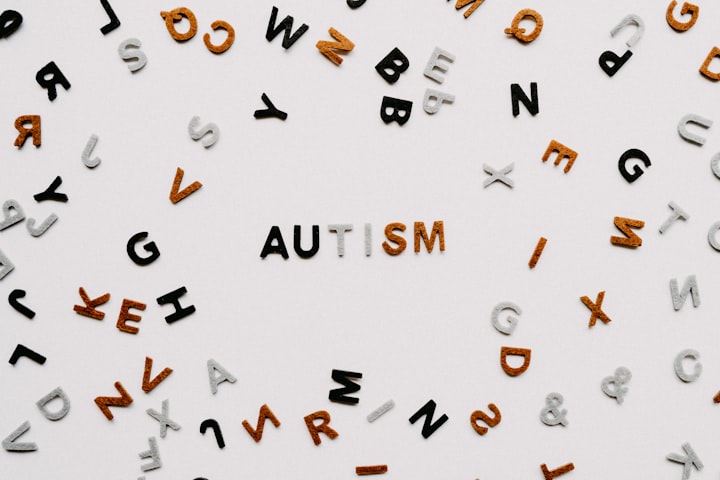BEST TREATMENT FOR AUTISM: AN INTRODUCTION
Plexus

Autism is a neurodevelopmental condition that affects the way patients behave and socialize. It generally manifests at an early age – between 2 and 4 years of age, although many people go undiagnosed until adulthood. The sooner the patient starts a treatment program, the greater the benefits. Tailored treatment can help the patient cope much better. Here, we take a closer look at the best treatment for Autism available at different ages, and also address some key questions about the condition.
Understanding Autism
Autism or Autism Spectrum Disorder (ASD) refers to a range of neurodevelopmental disorders that affect social, behavioral, and communicative abilities. Symptoms include repetitive movements, language delays, an inability to perceive social and emotional cues, and sensitivity to light or sound. Treatment for Autism involves a tailored program that helps patients in navigating social settings, such as school or the workplace.
Treatment options for Autism
There are a variety of treatment options for both children and adults. No single treatment is suitable for all, and patients may need to experiment on a trial and error basis, before they find what suits them best. Depending on when the diagnosis is received, the therapist will recommend different courses of action.
Treatment for children
In most cases of Autism, certain symptoms clearly manifest by the age of 2-3 years. Parents should be cautious and take their child for an evaluation, so that they can start the best treatment for Autism right away. Some of the components that might feature in a therapy program for a child with Autism include:
Play Therapy: Play is the most natural way in which children express themselves and practice behaviors. Children with Autism may not play the same way that neurotypical children do. However, play can help these children connect better with others and develop critical social and emotional skills. There are several types of play a therapist may recommend for your child, including:
Floortime: This entails the therapist or caregiver literally getting down onto the floor with the child, and playing with them. Initially, they would join in whatever the child is doing, and then introduce an extra element such as a new toy. The goal is to encourage back-and-forth interaction, about where the game can go.
Joint Attention Symbolic Play Engagement and Regulation (JASPER): This helps children improve their focus on more than one thing at a time, such as a toy as well as a person. This builds the necessary skills for group playtime and social settings.
Integrated play groups: This is a good opportunity for children to play with neurotypical children as well as other children with Autism. While an adult may set the initial tone of the play, children are left to interact with each other as they like. Play groups are an excellent way for children with Autism to learn more about sharing, pretend play, taking turns, and other critical social skills.
Speech Therapy: Children with Autism often have difficulty pronouncing words, understanding the context of words, or have a tendency to simply repeat what is being said without understanding. A speech therapist works closely with the child to teach them how to use language to better express themselves and have a conversation. In some cases, the child may require special exercises to strengthen the muscles used in speaking, and may benefit from the use of assistive communication devices. Usually, parents observe language delays at around 18 months of age, therefore Speech Therapy can be employed early on.
Occupational Therapy: This kind of therapy helps children with Autism pick up the skills they need to function independently. The occupational therapist will closely observe the child to see how they behave – their attention span, tolerance for touch, ability to do things on their own, motor skills, aggressive traits, and so on. They will then develop a tailored strategy that best assists the child, including a mix of developmental strategies, adaptive strategies, and play-based activities.
Sensory Integration Therapy: This helps moderate the child’s response to sensory input and helps even out any hyper- or hypo-stimulation. It involves providing the child with a sensory diet of shapes, colors, textures, smells, and tastes that they like, while also gradually introducing them to new ones.
For adults
Nowadays, more adults are coming forward to receive an evaluation for Autism. In certain cases of what is known as high-functioning Autism, the person may have average or above-average intelligence and verbal skills, and thus may not display unusual delays. They may also learn to mask their symptoms by mimicking the behavior of their neurotypical peers. However, this type of Autism too, requires proper treatment in order to manage their condition carefully, and to avoid a burnout.
Autism treatment for adults will typically be different from that prescribed for children. Treatment for adults will generally focus on specific difficulties that the patient is facing in their daily lives, such as maintaining relationships, anxiety, Depression, difficulties with their job, general social isolation, and loneliness. Some of the treatment options may include:
Regularising talk therapy with a trained counsellor
Consulting a psychiatrist to diagnose and assist with mental disorders
Participating in group therapy helmed by a psychologist
Taking up vocational rehabilitation for job-related problems
Joining support groups for adults with Autism
Living with Autism
With careful treatment and patience, people with Autism can learn the skills they need to interact efficiently in different social environments. Over time, they will be able to carve out a life for themselves, and view Autism treatment as just another part of life. The real problem, however, may come from other people. Those with Autism often have trouble maintaining friendships and/or romantic relationships, which can lead to loneliness. There is also the social stigma that the person with Autism has to combat. This stigma, and the consequent shunning or bullying from others, can cause the person to withdraw and fall into Depression and cause anger management issues.
To cope with these situations, it helps to join support groups run by and for other people with Autism. For both children and adults, it is also essential to report any form of bullying or harassment immediately. Many people with Autism fail to spot such incidents because of lack of verbal comprehension. Regular therapy helps them recognize instances of bullying or mockery.
FAQs
What is the best age to treat Autism?
In general, the earlier the intervention for Autism treatment, the better the results. Studies have shown that children as young as 12 months can benefit from treatment.
Does Autism worsen with age?
Autism is a non-degenerative disease and thus, does not worsen with age.
Does Autism cause anger?
The social and communication barriers that people with Autism experience on a daily basis can lead to frustration and anger. Often, this anger comes out in the form of temper tantrums or verbal outbursts.
Does Autism run in families?
While the pattern of inheritance (if any) for Autism is not known yet, studies have shown that Autism tends to run in families. Parents who already have a child with Autism are likely to have a second child with Autism as well.
What can I do with an out-of-control child with Autism?
It is important for parents to exercise patience even when the child demonstrates highly inappropriate or out-of-control behavior. Laying out clear rules can help avoid tantrums, like stating that the child can only eat ice-cream after dinner and not before. The therapist can also provide guidance on dealing with tantrums.
What to do when an Autistic child bites you?
Parents should calmly but firmly tell the child to stop biting by using clear commands such as “No!”. They should also seek to redirect the child’s energy to other activities like dancing or playing outside. Offering the child safe chew-toys to bite on can also help.
Can I give up my Autistic child?
Many parents may wish to give their child with Autism up for adoption, owing to a lack of resources for appropriate treatment or simply an inability to look after them well. There are several adoption agencies that specialize in providing such children new and fulfilling homes.
How do you calm an angry Autistic child?
The first thing to do is to focus on the child rather than worrying about what bystanders might be thinking. Parents should treat the child empathetically but firmly, and acknowledge whatever it was that triggered the child’s anger. Having a sensory kit on hand can help soothe them and put them in a calmer mood. As the child grows older, parents can teach them more coping strategies to manage anger.
Is Autism a disability?
Autism is medically regarded as a developmental disability, as it occurs due to abnormalities in the brain. However, many people with Autism resist labels, preferring to simply refer to it as a ‘condition’.
Does Autism come from the mother or father?
The causes of Autism are still unknown, and it is not possible to say specifically whether Autism was passed on by the mother or the father.
What is the mildest form of Autism?
High-functioning Autism is a type of Autism that usually requires the least intervention. People with high-functioning Autism tend to have strong academic and verbal skills, enabling them to comprehend instructions well. They may, however, still have difficulties adjusting to social situations.
Final word
Regardless of the age at which you are diagnosed, there are several options when it comes to the best treatment for Autism. Moreover, as awareness about Autism increases and more research is conducted, these treatments will expand and improve. Most importantly, people with Autism should remember that their condition is nothing to be ashamed of – it is simply something that sets them apart from the others. With confidence, patience, and a healthy support network, they can flourish in the lives they choose for themselves.





Comments
There are no comments for this story
Be the first to respond and start the conversation.